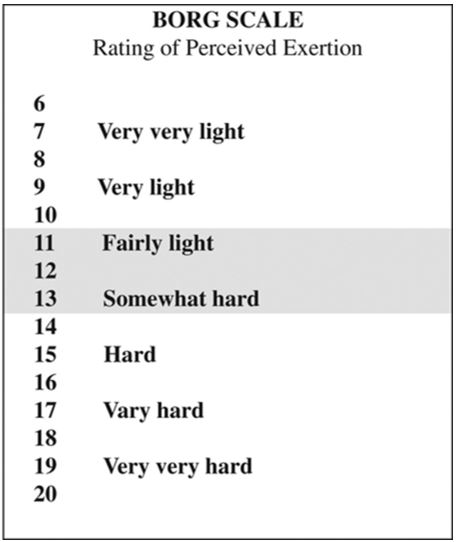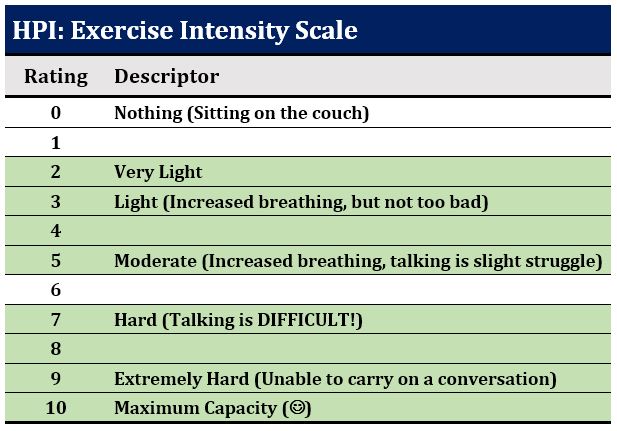While heart rate (HR) is a popular way to measure exercise intensity, we prefer Ratings of Perceived Exertion (RPE) and will explain why in this post.
When using HR, you workout at some percentage of Max HR; for example between 50-60% or 70-80% of Max HR. The usual way to determine Max HR is by subtracting your age from 220 (Max HR = 220 – age). Once you know Max HR, the upper and lower ends of your HR range can easily be determined.
This seems simple and straightforward but technology doesn’t always get it right. For example, there is a class action lawsuit against Fitbit, claiming their technology and/or algorithms are inaccurate. This can have serious consequences for the user, particularly at the higher end of intensity.
We prefer RPE
RPE stands for Ratings of Perceived Exertion and the key word here is “perceived.”
The “perception” of how hard you are exercising is important for evaluating the overall intensity of the workout. And it is probably more accurate than measuring heart rate only. For example, let’s say you were working out hard – near your maximum capacity. You would certainly “feel” like you were working hard, but if you were using a HR monitor to determine intensity and this HR monitor consistently under-reported your HR, you might think you weren’t working hard enough. This would be in spite of how you “feel” and might compel you to try or push yourself harder. This could lead to a dangerous situation.
The RPE scale takes this into account.
Using numbers on a scale and descriptors for how you should feel at various levels of intensity, a user can accurately identify exercise intensity.
This is probably the most popular RPE scale. If you’ve ever taken a treadmill test – either for a research project in college (or graduate school) or at the cardiologist office, you probably saw something like this.

Notice on the left there are numbers for rating the intensity of exercise and descriptors on the right for helping you pick the most appropriate rating. This is the perception part we refer to and think is important.
While the ratings correlate with HR, they are not 100% accurate.
In both The Academy and HPI Diabetes Academy, we use a slightly different RPE scale – the CR-10 Scale.

We use this version for a couple of reasons:
One, it starts at zero. Notice the scale above starts at 6. We prefer a scale that starts at zero so we have a better anchor point for a resting intensity.
Second, it is much more convenient than any type of HR monitor.
Once a person is comfortable with using the scale, nothing else is needed.
To finish this up, the green areas indicate how we prescribe exercise for those in our programs. We recommend either “light” or “hard” exercise and prescribe intensity using this scale. For example, light workouts should have an RPE of 2-5 while hard workouts should have an RPE of 7+. We skip “6” on purpose and it’s not because there is no descriptor. There is a metabolic reason.
Beyond the two points mentioned above, this also allows our users a lot of flexibility. They can do any activity they’d like, as long as it meets the RPE criteria. This means they aren’t restricted to walking, jogging, cycling or any activity where measuring HR might be problematic (like swimming).
This is why we like to use RPE for measuring exercise intensity.



One Comment on “RPE and Determining Exercise Intensity”